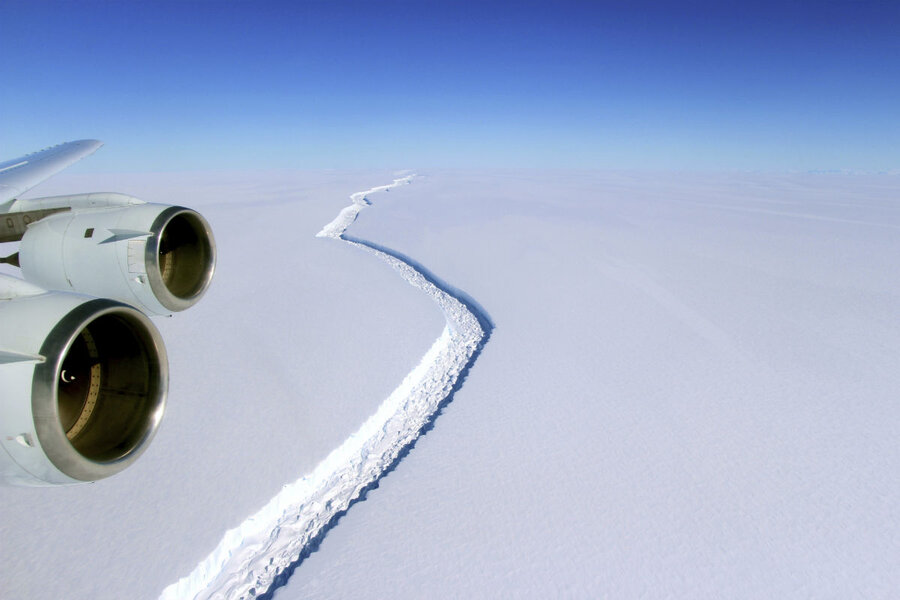Larson C fracturing: Only 12 miles connect massive ice shelf to Antarctic
Loading...
What might become one of the largest icebergs ever hangs by a thread from Antarctica's Larsen C ice shelf.
The vast rift has grown more than 6 miles longer since January 1, leaving an area reportedly the size of Delaware connected to the main shelf by a mere 10 percent of the total length, the British MIDAS project announced Thursday. Its loss threatens to destabilize the fourth-largest Antarctic ice shelf.
When exactly that will be is unknowable, according to project leader and Swansea University glaciologist Adrian Luckman: "Although you might expect any extension to hasten the point of calving, it actually remains impossible to predict when it will break because the fracture process is so complex," he told BBC News. "My feeling is that this new development suggests something will happen within weeks to months, but there is an outside chance that further growth will be slow for longer than that.”
This break has been a long time coming, as The Christian Science Monitor reported earlier this week: what began as a tiny crack in the 1960s is now 90 miles wide, and almost one-third of a mile deep. Most of that change has taken place in just the past few years.
While many instinctively assume that the calving is a result of global climate change, that may not necessarily be the case: It’s cracking, not melting. "This is probably not directly attributable to any warming in the region, although of course the warming won't have helped," Dr. Luckman told NPR. "It's probably just simply a natural event that's just been waiting around to happen."
This distinction differentiates it from its two companions, Larsen A and B, whose respective breakups in 1995 and 2002 appear to have been hastened by a series of warm summers.
Nor will this cracking directly contribute to the rise of the seas, as the Larsen C shelf already floats in the ocean. It can't affect water levels any more than a melting ice cube can cause a glass to overflow. Ice shelves do, however, play an indirect role.
Glaciers are dynamic rivers of ice that flow under the pressure of their own weight. Without the dams of floating ice shelves to hold them back, the glaciers that cover much of the Antarctic continent would be freer to flow into the ocean, displacing water and raising ocean levels.
Even after the rift tears through, as much as 90 percent of Larsen C will remain. However, the loss has the potential to destabilize the entire shelf. Previous work by the MIDAS project analyzed this risk, and scientists worry that Larsen C may eventually follow the example of its neighbor Larsen B, which “splintered and collapsed in just over one month,” according to the NASA Earth Observatory.
In such an event, all the ice held back by the shelf could raise global sea levels by as much as four inches, the BBC reported earlier this month.
If Larsen C goes the way of A and B, it will join a dozen other major ice shelves that have either broken up or significantly retreated in the last few decades, including Prince Gustav Channel, Larsen Inlet, Wordie, Muller, Jones Channel, and Wilkins, the BBC reports.








